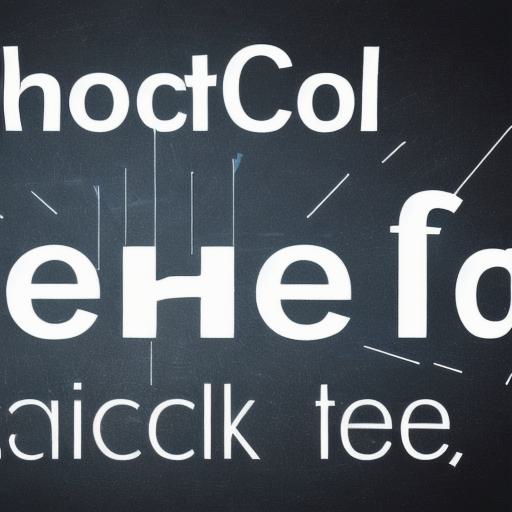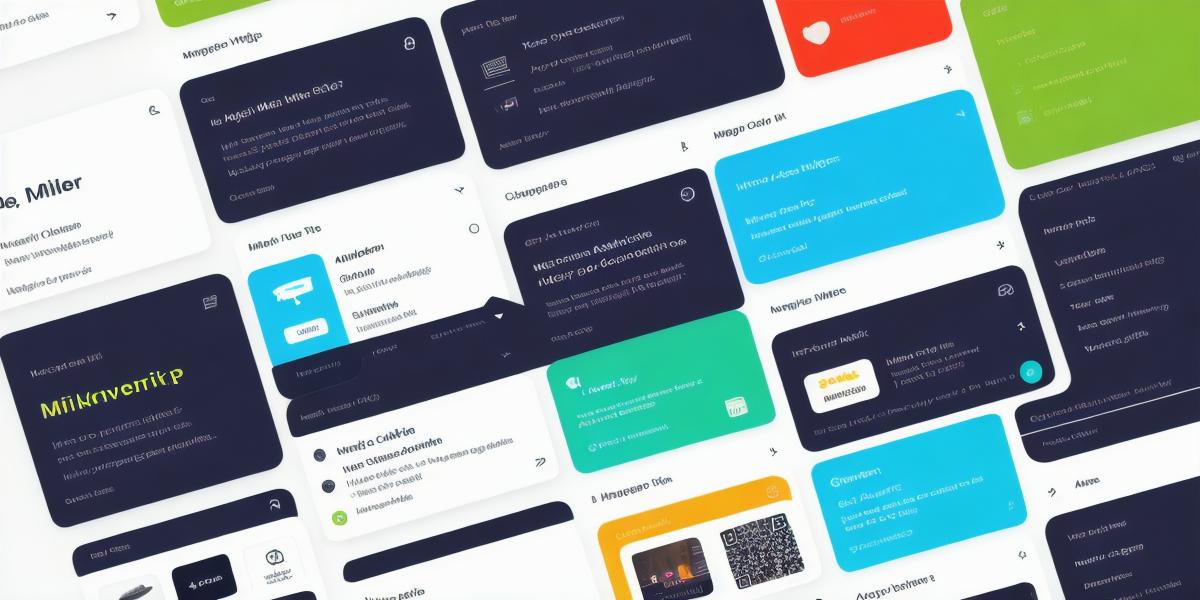Introduction
With millions of mobile apps available on app stores, it can be challenging to stand out from the crowd and attract users. However, with the right marketing tools, you can increase user engagement and downloads, leading to the success of your mobile app. In this article, we will explore the best mobile app marketing tools that you can use to achieve this goal.
1. Social Media Marketing
Social media is a powerful tool for promoting your mobile app. With over 3.9 billion active users on social media platforms such as Facebook, Instagram, and Twitter, you have access to a vast audience. Here are some tips on how to use social media effectively for mobile app marketing:
- Create engaging content that resonates with your target audience. This could be in the form of blog posts, images, or videos.
- Use targeted ads to reach users who are most likely to download and engage with your app.
- Collaborate with influencers and other brands to increase visibility and credibility.
- Run social media contests and giveaways to encourage users to download and share your app.
2. Email Marketing
Email marketing is a great way to keep your existing users engaged and informed about new updates, features, and promotions. Here are some tips on how to use email marketing effectively for mobile app marketing:

- Build an email list by offering incentives such as exclusive content or discounts.
- Send personalized emails that address the user’s interests and preferences.
- Use automation tools to send regular newsletters and promotional emails.
- Use eye-catching subject lines and engaging content to increase open rates and click-through rates.
3. App Store Optimization (ASO)
ASO is the process of optimizing your app’s listing on app stores to improve its visibility and ranking. Here are some tips on how to use ASO effectively for mobile app marketing:
- Use relevant keywords in your app’s title, description, and tags to improve search results.
- Optimize your app’s screenshots and video previews to showcase your app’s best features.
- Use ratings and reviews to increase credibility and visibility.
- Test different variations of your app’s listing to see what works best for your audience.
4. Influencer Marketing
Influencer marketing is a strategy that involves partnering with social media influencers to promote your app. Here are some tips on how to use influencer marketing effectively for mobile app marketing:
- Identify influencers who have a large following in your target audience and whose interests align with your app’s features and benefits.
- Reach out to the influencer and propose a mutually beneficial partnership, such as a sponsored post or review.
- Provide the influencer with clear guidelines on how to promote your app, including any specific messaging or calls-to-action.
- Monitor the influencer’s performance and adjust your strategy as needed.
5. Content Marketing
Content marketing is a strategy that involves creating and sharing valuable content to attract and engage users. Here are some tips on how to use content marketing effectively for mobile app marketing:
- Create a blog or YouTube channel to share informative and engaging content related to your app’s features and benefits.
- Use social media to promote your content and drive traffic to your website or app listing.
- Collaborate with other brands and influencers to create cross-promotional content.
- Measure the success of your content using analytics tools such as Google Analytics.
6. User-Generated Content (UGC)
UGC is a strategy that involves encouraging users to create and share their own content related to your app. Here are some tips on how to use UGC effectively for mobile app marketing:
- Encourage users to share their experiences using your app on social media by offering incentives such as prizes or recognition.
- Feature user-generated content on your website or app listing to showcase the creativity and diversity of your user base.
- Use UGC as social proof to increase credibility and trust among potential users.
7. Referral Marketing
Referral marketing is a strategy that involves encouraging existing users to refer their friends and family to your app. Here are some tips on how to use referral marketing effectively for mobile app marketing:
- Offer incentives such as discounts or exclusive content to reward users who refer others to your app.
- Make it easy for users to refer their friends and family by providing them with pre-written emails or social media posts.
- Use personalized messaging to encourage users to share your app with their network.
8. App Store Optimization (ASO)
ASO is the process of optimizing your app’s listing on app stores to improve its visibility and ranking. Here are some tips on how to use ASO effectively for mobile app marketing:
- Use relevant keywords in your app’s title, description, and tags to improve search results.
- Optimize your app’s screenshots and video previews to showcase your app’s best features.
- Use ratings and reviews to increase credibility and visibility.
- Test different variations of your app’s listing to see what works best for your audience.
9. User Acquisition Cost (UAC)
UAC is a metric that measures the cost of acquiring each new user through advertising. Here are some tips on how to use UAC effectively for mobile app marketing:
- Set a budget for your advertising campaigns and track your UAC to ensure you’re getting a good return on investment (ROI).
- Experiment with different ad formats, targeting options, and messaging to see what works best for your audience.

- Use A/B testing to optimize your ads and improve their performance.
10. User Retention Strategies
User retention is essential for the long-term success of your mobile app. Here are some tips on how to use user retention strategies effectively for mobile app marketing:
- Offer personalized content and features that cater to each user’s preferences and interests.
- Send push notifications and reminders to keep users engaged and informed about new updates and promotions.
- Use gamification and loyalty programs to incentivize users to continue using your app.
- Conduct regular surveys and feedback sessions to understand your users’ needs and improve their experience.
Summary
In conclusion, the best mobile app marketing tools for increasing user engagement and downloads are a combination of social media marketing, email marketing, ASO, influencer marketing, content marketing, UGC, referral marketing, ASO, UAC, and user retention strategies. By using these tools effectively, you can stand out from the competition and attract and retain users for the long-term success of your mobile app. Remember to track your metrics and adjust your strategy as needed to ensure a good ROI.
FAQs
1. What is ASO, and how does it work?
ASO stands for App Store Optimization, which is the process of optimizing your app’s listing on app stores to improve its visibility and ranking. ASO works by using relevant keywords in your app’s title, description, and tags, as well as optimizing your app’s screenshots and video previews to showcase your app’s best features.
2. What is UAC, and how do I calculate it?
UAC stands for User Acquisition Cost, which is a metric that measures the cost of acquiring each new user through advertising. To calculate UAC, you need to divide the total ad spend by the number of new users acquired from your advertising campaigns.
3. What are some effective referral marketing strategies?
Some effective referral marketing strategies include offering incentives such as discounts or exclusive content to reward users who refer others to your app, making it easy for users to refer their friends and family by providing them with pre-written emails or social media posts, and using personalized messaging to encourage users to share your app with their network.
4. How do I track my metrics for user retention strategies?
To track your metrics for user retention strategies, you can use analytics tools such as Google Analytics to monitor user engagement, retention rates, and churn rates. You can also conduct regular surveys and feedback sessions to understand your users’ needs and improve their experience.




